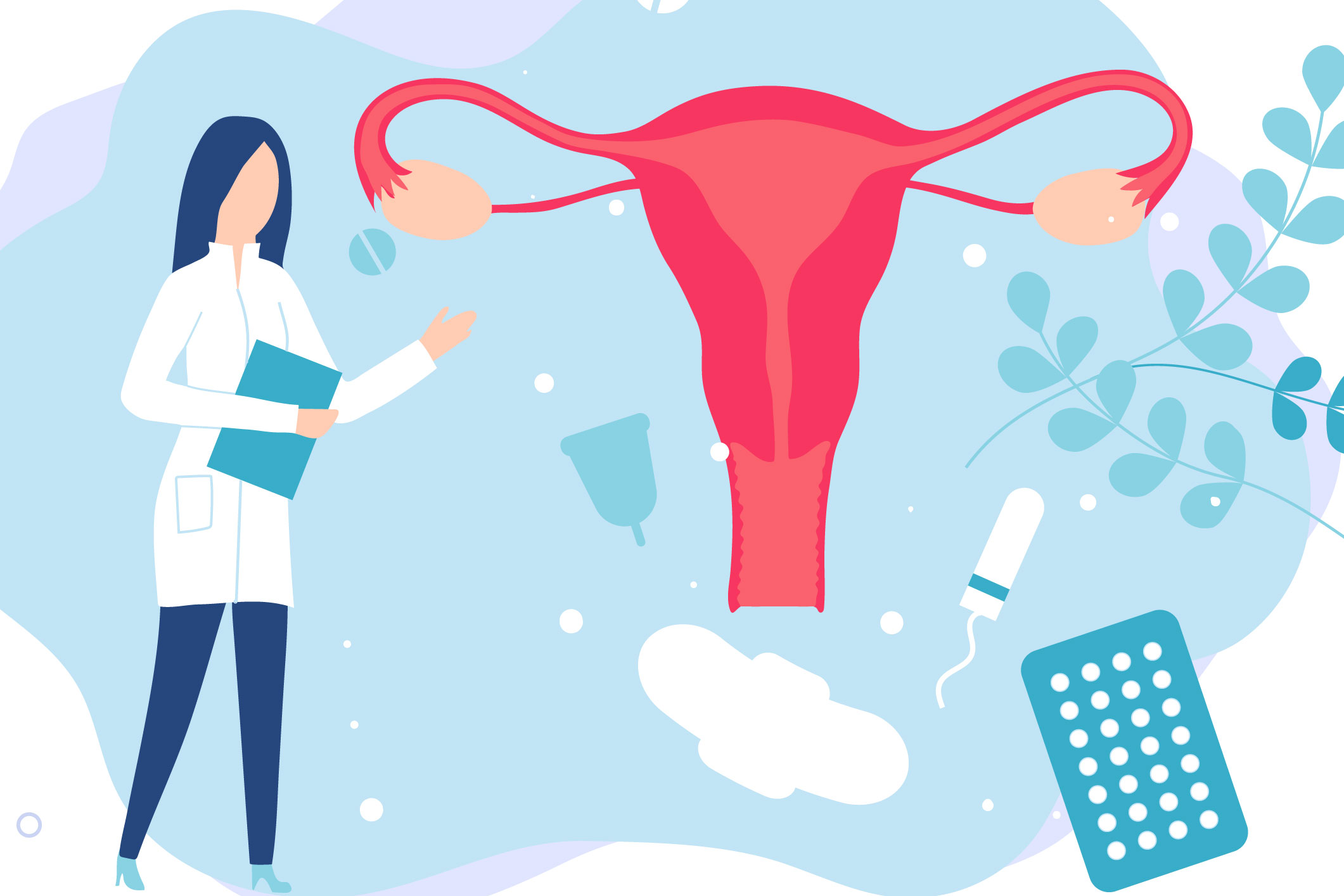
Female gynecologist Dr. Sarah Shepherd of OB/GYN Specialists of Tulsa understands how a woman’s body works, something she often has to explain to her patients, especially when it comes to menstrual cycles. She is part of a team of doctors at OB/GYN Specialists of Tulsa that also includes Dr. Grant Cox, Dr. Paul Gehring, Dr. Gena Gray, and Dr. Cate Hildebrand.
“My patients ask me if menstrual cycles change with age, if menstrual cycles change dates, and can menstrual cycles change with the seasons of life,” Dr. Shepherd said. “The answer to all these above questions is YES!”
Answers to patients from this team of doctors are always simple and easy to understand.
“As I counsel patients in my OB/GYN practice, I explain that the menstrual cycle can change as women age,” Dr. Shepherd said. “In a woman’s teenage years, her periods can be longer and heavier. After a few years (3 or so), they typically turn to what will be her normal pattern. Then, as we transition to perimenopause (the 7-plus years bleeding up to menopause) the menstrual cycle can become irregular again.”
Menstruation is the shedding of the uterine lining, which results in a period. It is the active loss of blood and uterine tissue. A part of the brain (the pituitary gland) talks to the ovaries and tells them to release hormones that, in turn, act on the uterus to cause the start of bleeding.
Menarche is when a female begins her first period. Menopause ends with the last period or one year after the last period.
Girls typically start their periods at the average age of 12, but anywhere from 8 to 16 years old is considered normal. The average age of menopause for women is 51.5 years.
The menstrual cycle usually lasts 24 to 38 days and is the body’s way of preparing for a possible pregnancy.
“The normal length of a menstrual cycle is 28 days, but not everyone’s body reads the book, so a cycle can range from 21 days to 35 days in length and still be considered normal,” Dr. Shepherd said.
The bleeding normally lasts for 3 to 7 days, but girls and women can show signs of their period before bleeding starts. The most common symptom is menstrual cramps in the pelvic area caused by the uterus contracting to release its lining. Symptoms vary from person to person as well as in intensity. Other symptoms related to the menstrual cycle include acne, breast tenderness, mood changes, headaches, bloating, and trouble sleeping.
Irregular menstrual cycles are typically fewer than 21 days or more than 35 days between periods. Additionally, irregular menstrual cycles could include not having a period for 3 months, heavier or lighter flow than normal, more menstrual cramps than normal, or bleeding in between periods.
Typically, a female expects to lose between 2 to 3 tablespoons of blood during a period. Bleeding through a tampon or a pad in an hour, passing clots larger than a quarter, and cycles longer than 7 days could be signs of trouble.
“These would be times I, as an OB/GYN working at a women’s health group, would want to hear from you and potentially figure out why this is occurring to you,” said Dr. Shepherd, adding that women should be familiar with their cycle. “Knowing your menstrual cycle can help you maintain a healthy life.”
Dr. Shepherd suggests tracking cycles on a calendar or using a menstrual app. Essentially, put an X on the day bleeding begins. That marks the follicular phase that starts with bleeding and ends with ovulation. Continue to mark an X every day you bleed.
Ovulation usually happens on Day 14 of the 28-day menstrual cycle. Ovulation home kits, which are simple pee tests, detect a rise in luteinizing hormone in the urine to pinpoint the exact day.
The last phase of the menstrual cycle is called the luteal phase. It lasts from Day 15 to Day 28.
“You either become pregnant at the end of this phase or you shed your uterine lining by starting to bleed again,” Dr. Shepherd said. “On this day, you would mark another X on your calendar, and now you know the length of your menstrual cycle.”
Many women don’t have this beautiful 28-day cycle, though. Hormone changes such as menopause as well as stress, medications, certain health conditions like thyroid disease, endometriosis or PCOS, and other factors can cause the menstrual cycle to change dates or length of time.
“It’s always best to consult your gynecologist when your menstrual cycle shows any deviations from the norm,” Dr. Shepherd said. “If you are a female near me and need assistance, call our office and one of our OB/GYN associates will help you.”

